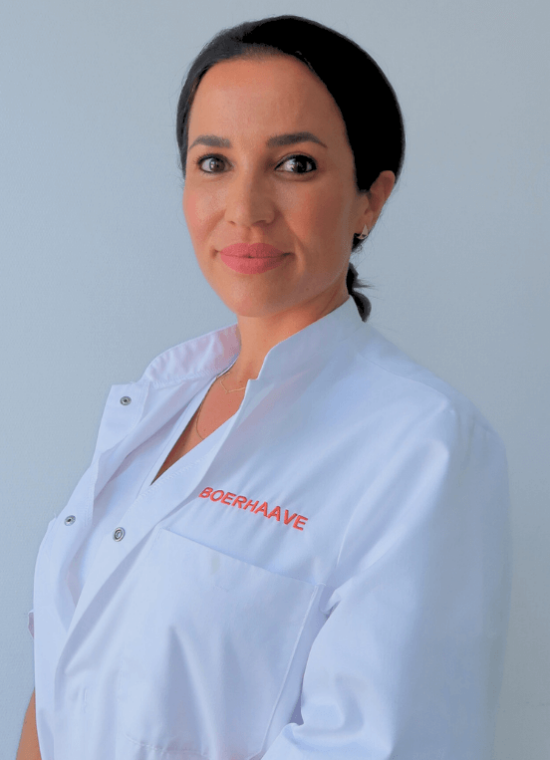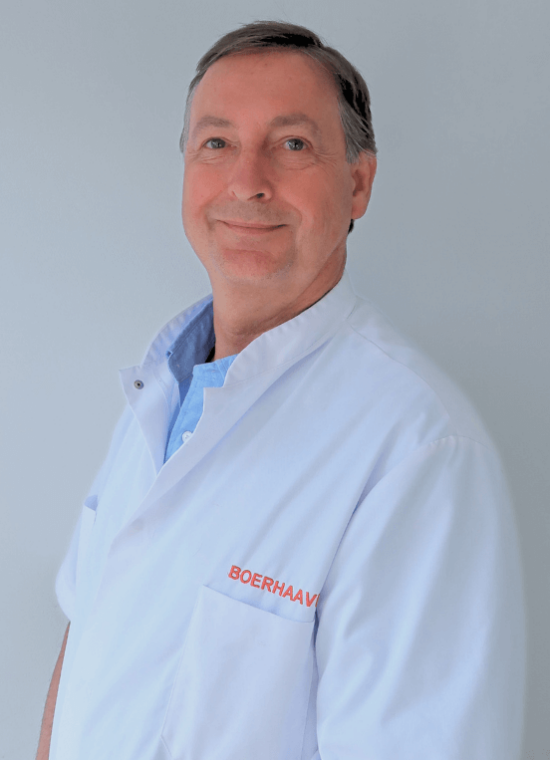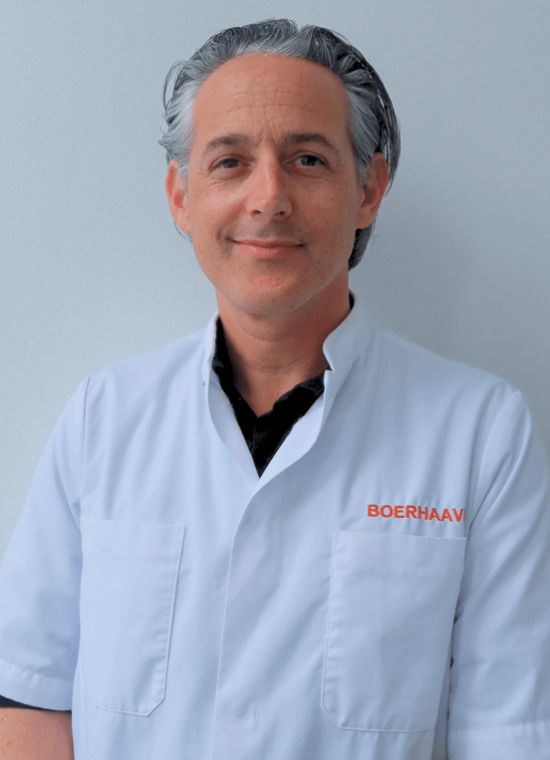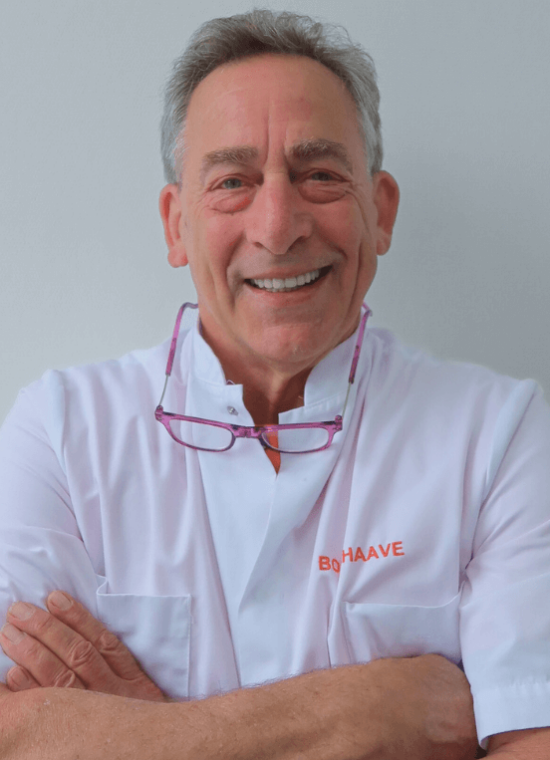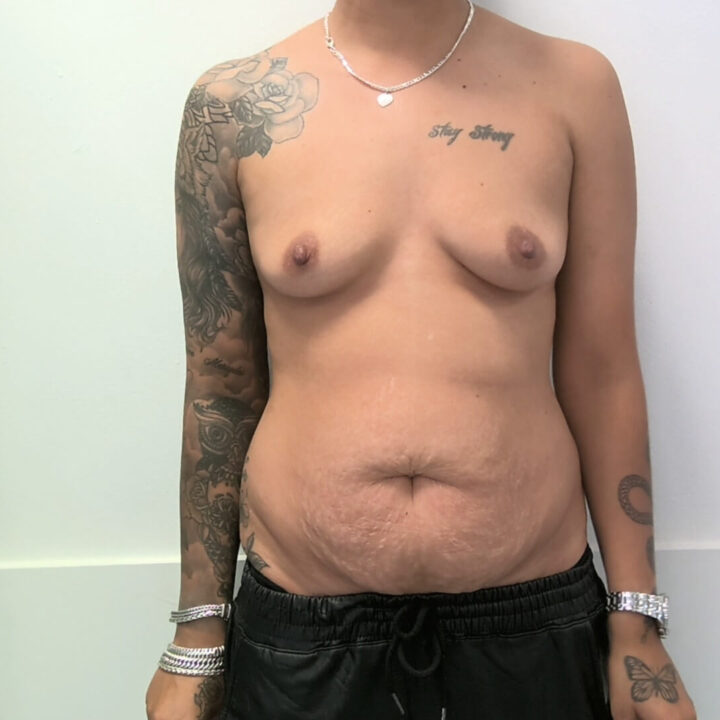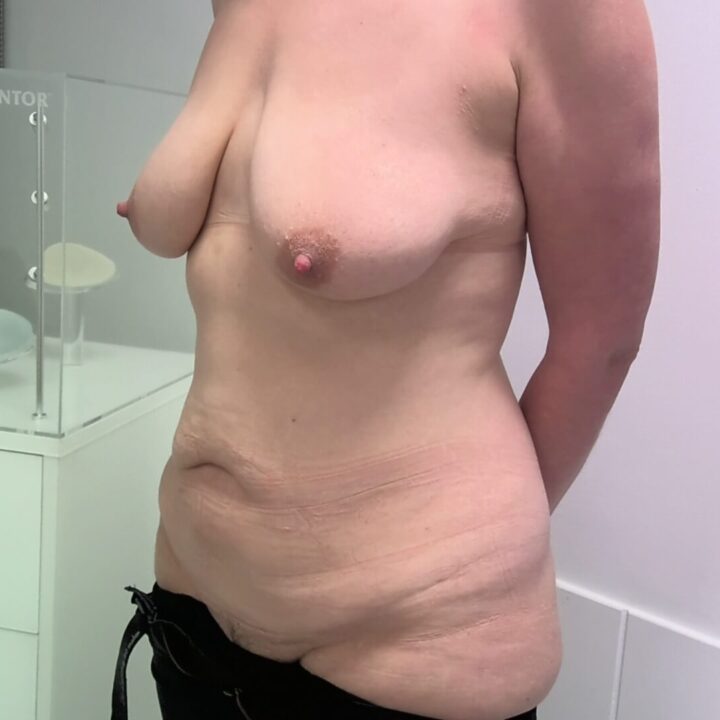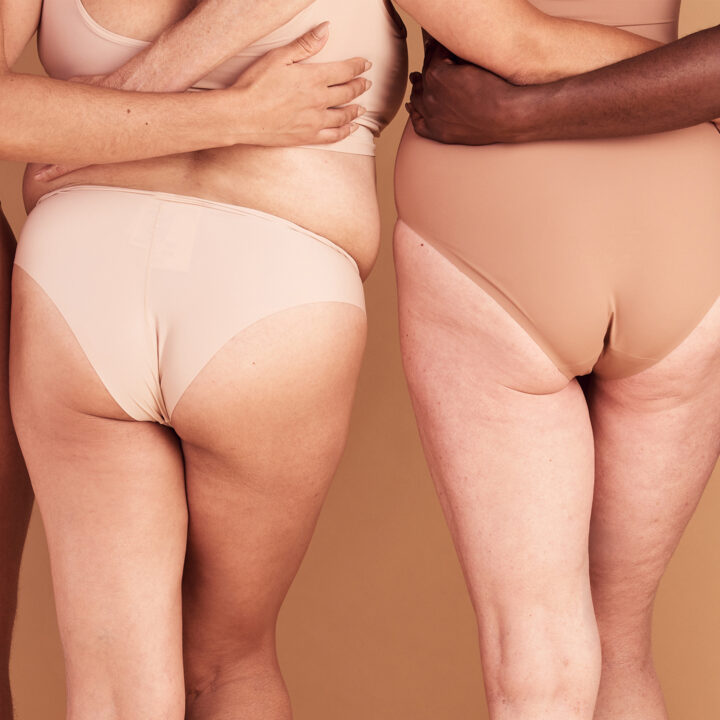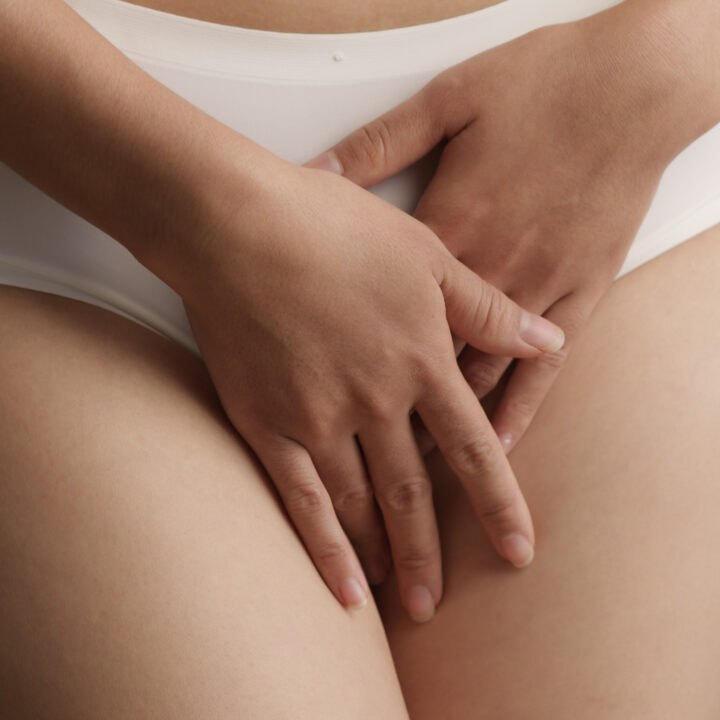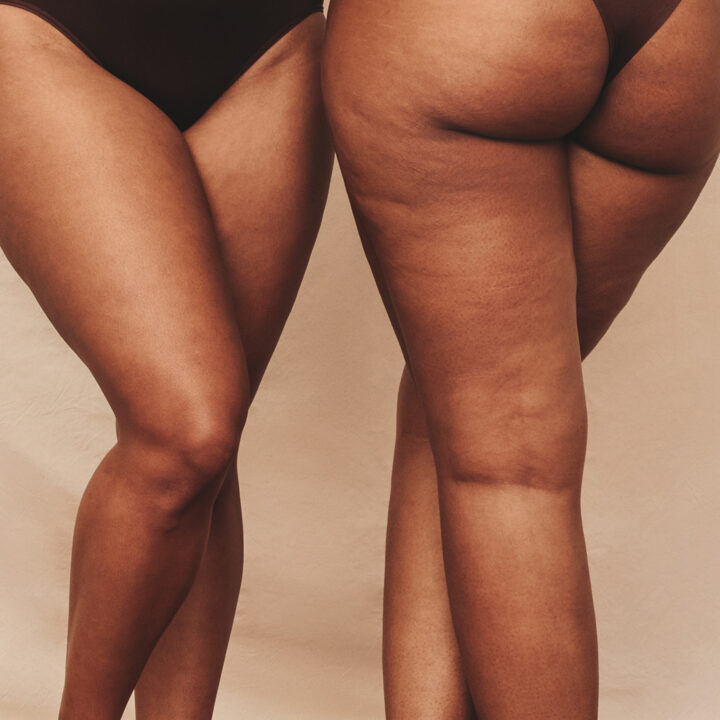Mommy makeover
A “mommy makeover” is a combination of surgical procedures aimed at women, for example to correct breasts, abdomen, hips and thighs.
The term “mommy makeover” is frequently mentioned in the news and media. Although it is more of a marketing term than a technical term, the fact remains that pregnancy takes a tremendous toll on a woman’s body. Your breasts may have lost volume, your abdominal muscles may have stretched from your pregnancy and the skin around your tummy may have loosened and slackened. And this all affects the generally youthful appearance of your body.
The aim of a mommy makeover is to remedy these aesthetic problems that are a direct result of pregnancy. A mommy makeover therefore incorporates several procedures at the same time.
What does the mommy makeover cost
We guide you step by step before, during and after treatment
01 More information
A mommy makeover aims to remedy aesthetic problems that arise after a pregnancy. Each woman’s body will be affected differently after a pregnancy.
The effects of pregnancy include stretched skin around the abdomen, weakened and damaged abdominal muscles, sagging breasts, loss of volume in breasts, and localised pockets of fat in specific areas. A mommy makeover is not a specific set of procedures. It is a combination of procedures that can be combined after pregnancy.
This combination is specific for each person, but the most common combinations are:
- Tummy tuck and a breast uplift
- Tummy tuck and a breast augmentation
These combinations may be supplemented with other procedures, such as liposculpture, nose correction, eyelid correction and/or facelift.
02 Consultation
Plastic surgeon
The consultation is always held with the plastic surgeon who will be carrying out your procedure.
During this consultation, you can discuss what you would like to have done during your mommy makeover. Your plastic surgeon will answer your initial questions and go through your medical history with you. They will then take photos for your medical file, and will examine your body. Given that a mommy makeover usually involves a combination of a breast correction and tummy tuck, the plastic surgeon will examine your breasts and abdomen. They will take the measurements of your breasts and measure the thickness of your skin. Depending on whether you are having a breast augmentation or breast uplift, the plastic surgeon will discuss the chosen procedure with you.
They will then look at your abdominal area. This involves examining how loose the abdomen skin is, whether the muscles have to be tightened, and/or if the tummy tuck should include liposculpture of the upper abdomen/tummy.
The plastic surgeon will show you before and after photos of treatments they have previously performed, and you will then have a further opportunity to ask any questions you may have. A summary of your consultation will then be set out in a treatment plan, and the overall costs will be discussed with you directly. The consultation will take approximately 45 minutes, and aims to inform you as clearly and fully as possible.
Consultants
Following on from your first consultation with your plastic surgeon, you will have an appointment with your consultant. The aim of this appointment is to tell you about the general aspects to be arranged with respect to your mommy makeover.
03 Procedure
You are expected to arrive at the Boerhaave clinic half an hour before your procedure.
A mommy makeover usually involves an overnight stay. You will therefore be free to go home again the day after your operation. Before the procedure, the plastic surgeon carefully marks out what they are going to do. The general anaesthetic is then administered.
Tummy tuck
When performing a tummy tuck, the plastic surgeon will make an incision around the belly button. The belly button is then separated from the underlying tissue so it stays in position. A second incision is then made just above the pubic area and below the bikini line, extending from hip to hip.
The plastic surgeon separates the skin tissue from the underlying muscles up to the rib cage. The abdominal muscles, which have often slackened, are then tightened and stitched together, which is sometimes referred to as “reefing”. The skin flap, i.e. the loosened skin, is then pulled downwards towards the incision. Once the excess skin has been removed, the plastic surgeon carefully closes the wound with stitches.
At the point where the belly button is intended to be, a small hole is made in the skin. The belly button is pushed through this hole and stitched in place. The position of the belly button is then in line with the rest of the abdomen.
Breast augmentation
An incision is made underneath the breast in the future breast crease. The plastic surgeon then creates a pocket (space) in which the implant is placed and positioned.
The implants can be positioned in different ways. The plastic surgeon may opt to position the implant completely over the pectoral muscle, completely under the pectoral muscle, or half under the pectoral muscle. The last option is known as dual plane. During your consultation with the plastic surgeon, you will discuss which position will have the best result for you.
The most important criteria in deciding whether or not to place the implant under the pectoral muscle are thickness of skin and volume of fatty tissue. If the skin is not thick enough, the implant may be visible if the implant is positioned above the pectoral muscle. This creates an unnatural result. Once the breast implant has been positioned, the pocket is closed and the skin is stitched together with absorbable stitches.
The wound is then taped with steri-strips, over which a transparent watertight plaster is placed.
Breast uplift
The most common technique is to make three incisions in the breast: around the areola, vertically downwards from the lower edge of the areola and horizontally in the breast’s natural crease.
This technique is also referred to as the anchor lift (because of the shape of the scar). The skin is then separated from the underlying tissue.
The breast tissue is then shifted upwards and the excess skin is removed. Depending on the new position of the breast, a hole is made in the skin where the nipple is to be stitched in place. The open skin edges are stitched from the nipple down to the crease under the breast. Once the excess skin has been removed, the breast can be reconstructed. The wound is covered with a gauze dressing and a support bandage. The operation may also be combined with breast implants.
You can add other treatments to your mommy makeover, such as liposculpture, eyelid correction, nose correction or facelift.
04 After care and recovery
After a mommy makeover, you will stay overnight at the clinic. Once the nursing staff and anaesthetist give their approval for you to leave, you are free to go home the next day.
Post-procedure pain
For the first few days after your mommy makeover, you will feel a pulling pain in your skin and muscles around the abdomen. The area operated on will be sensitive and sore, and feel tight. In the first week after the tummy tuck, you will not be able to do much, as your daily business will be hampered by very sore muscles.
Your breasts will be slightly swollen for the first few days. This will subside again after the third day or so.
The nurse will advise you to take 2 Paracetamol tablets (500 mg) for the pain once every 4 to 6 hours. Once you are back home, you can continue this dosage to deal with any pain. As the pain reduces, you can reduce the dosage to 1 tablet every 4 to 6 hours.
Recovery
As with every surgical procedure, the body takes time to recover. The treated area will initially be bruised, sore and swollen. The scars may also be reddish in colour and raised immediately after the facelift. You shouldn’t worry about this, as it is your body’s natural reaction.
The skin will feel hard for a few weeks, which is due to the scars forming. The skin may sometimes be more sensitive or less sensitive than usual, which is a normal reaction to the operation and will gradually disappear. Swelling and bruising will gradually subside.
Scar cream
At your first check-up, you will be given a scar care cream to take home with you. Once the wound has closed and the scabs have disappeared, you can start applying the scar cream. If you apply this cream to the closed wound twice a day, you increase the chance of the wound healing nicely.
05 Results
The final results of a mommy makeover will not be visible until after a couple of months. Your abdomen will be flatter and tighter. Your breasts will have more volume. The results may evoke strong emotions, given that the treatment is seen as a “transformational” journey for many women.
Scars
The plastic surgeon will do everything they can to ensure that the scars are virtually invisible. The scars will initially be red and swollen, but this will start to fade after a couple of weeks. It is useful to know that a scar takes 1 to 1½ years to completely calm down. So remember to apply the scar cream to your scars and stay out of the sun. After the first year, always use factor 30 or higher when you are in the sun, to protect your skin.
06 Risks and complications
It is important you are aware that every surgical intervention can entail risks and complications. Plastic surgery procedures are in principle carried out on healthy people, so the risks and chances of complications are low.
A mommy makeover is a combination of procedures. So you may be under general anaesthetic for quite some time. We make sure any risks are reduced to an absolute minimum, by providing plenty of information, taking a thorough medical history (noting your case history, including medication, any problems experienced in previous operations, allergies, etc.) and applying our professional procedures.
Mommy makeovers are successfully performed on many people each year at the Boerhaave Medical Centre. The chances of complications arising are luckily rare. You can help reduce certain risks by carefully reading through the instructions you are given prior to your treatment.
Possible complications of a mommy makeover may be:
- Haematoma (blood clot under the skin which has to be removed)
- Adverse reaction to the sedation
- Haemorrhaging
- Infection
- Change in sensitivity
- Permanent scars
- Damage to underlying structures
- Unsatisfactory aesthetic result.
Capsular formation
If the treatment includes a breast augmentation, there is a risk of capsular contracture.
Scar tissue forming in the body around the implants may tighten the breast, making the breast feel hard and sometimes painful. Excessive hardening of the breasts may occur soon after an operation, or not until years later. It is not possible to predict whether this tightening will occur, but the risk of it occurring increases with time (after 10 years, there is a 10 to 12 percent risk). Capsular contracture may happen on one side or both sides. It is more common with implants positioned above the pectoral muscle. It can be treated by having an operation to either replace or remove the implant. However, capsular contracture may still reoccur after surgical procedures to treat it.
Smoking
Patients who smoke or use tobacco or nicotine products (such as nicotine patches and chewing gum) at the time of their surgery have a greater risk of complications, such as skin loss and impaired wound healing. People who are exposed to passive smoking may also have an increased risk of complications such as these. What’s more, smoking may have a negative effect on the anaesthesia, which may in turn lead to an increased risk of bleeding. People who are not exposed to tobacco smoke or nicotine-containing products have a significantly lower risk of such complications. It is important not to smoke for at least 2 weeks prior to the operation and to keep this up for the entire recovery process.
More information
Plan your appointment now in our agenda or let us call you back.
